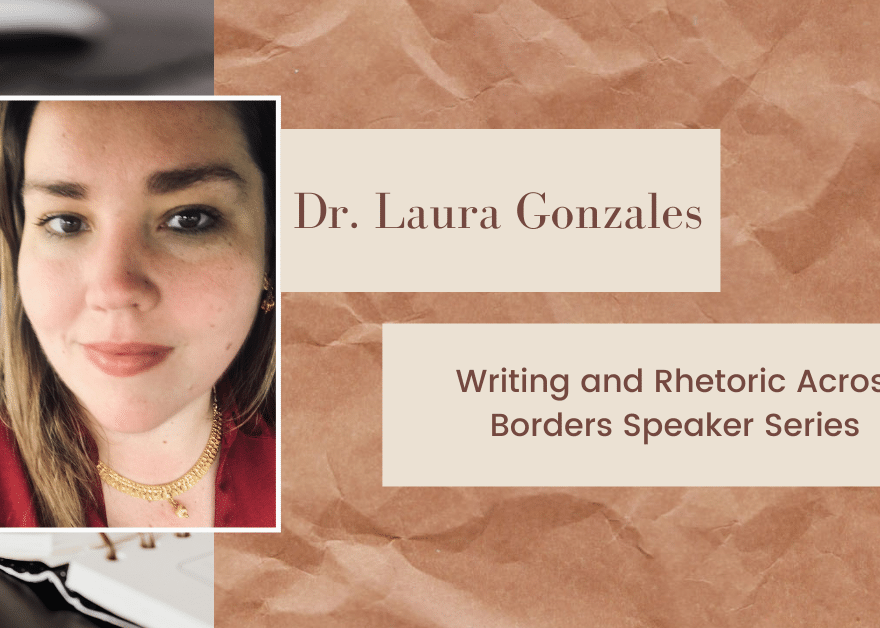On Tuesday, April 12, Dr. Laura Gonzales gave a fascinating presentation as part of the WRD Writing and Rhetoric Across Borders Speaker Series. Dr. Gonzales’ talk entitled “Translating Writing Across Communities, Languages, Contexts, and Disciplines” primarily focused on the ways in which we can all make a more conscious effort to bring equity into our work–both inside and outside the classroom.
Much of what Dr. Gonzales had to share stemmed from the work she did with multilingual communicators who do translational work for her 2016 book Sites of Translation. A term she referred to frequently throughout her presentation was “translation moments.” Dr. Gonzales defines this phrase as “instances in time when multilinguals pause to make a rhetorical decision about how to translate a term or phrase from one language to another.” She explained that these moments happen frequently for translators in part because they are trying to make the translation make the most sense, but also because they want the phrases to flow as well as they can.
Although translation itself is an important communicative tool, Dr. Gonzalez explained that there is also a specific kind of rhetoric behind the act of translation. This is because multilingual writing is “culturally situated, rhetorical, recursive and technological.”
At the top of her presentation, she asked the audience what multilingualism meant to them. And while the answers varied widely, none were able to succinctly explain why multilingualism is a multifaceted way of communicating. It is far more than simply being able to communicate in multiple languages. Multilingualism is also how those languages are related to the societal and cultural contexts around them.
“Languages are always moving,” Dr. Gonzales explained. Because they are always moving they are impacted by things like “capitalism, colonization and their intersections.” If folks spent more time understanding the ways in which languages are intrinsically connected to society, more work can be done to work towards “change” and “justice.”
Throughout the presentation, Dr. Gonzales explained that one of her key takeaways in doing interviews with translators was understanding how much equity work can be done in the classroom. “Language and community are the core to classroom connections,” she explained. “Connection and flexibility are keys to translating across contexts. The translation is a technology for innovation.”
As students of WRD, Dr. Gonzales’ words are particularly meaningful. We spent so much time talking about the ways in which English cultivates rhetoric though we don’t spend as much time talking about the rhetoric the language pushes against other languages. Because I’m currently taking Global Englishes with Jason Schneider, I particularly appreciated Dr. Gonzales’ talk last week. One of the main focuses of our class is on how English influences other languages and vice versa. So hearing what she had to say about translation as an act of rhetoric was really interesting to me.
Once we understand, as Dr. Gonzales said, that “language is community” and “language is land,” we can better see how language is a powerful mechanism. Although much of its power has been used for oppression in the past, we can use it as a tool for empowerment in the future. In reference to building a better future, and homage to Dr. Gonzales beginning her talk with a quote from iconic feminist adrienne maree brown, here is another quote of brown’s to consider:
“If the goal was to increase the love, rather than winning or dominating a constant opponent, I think we could actually imagine liberation from constant oppression. We would suddenly be seeing everything we do, everyone we meet, not through the tactical eyes of war, but through eyes of love. We would see that there’s no such thing as a blank canvas, an empty land or a new idea – but everywhere there is complex, ancient, fertile ground full of potential.”
